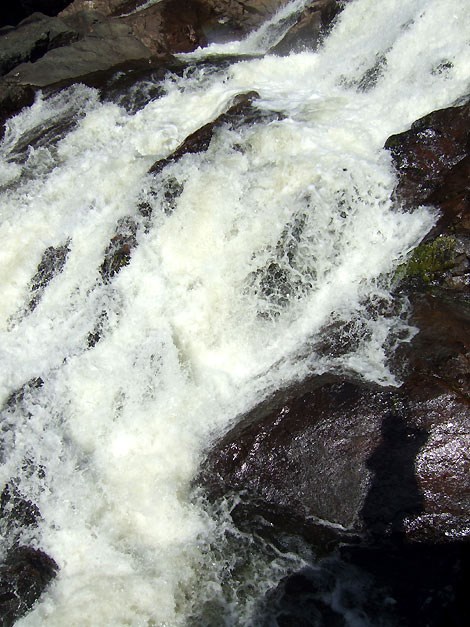The fall colours have started to show in the Sault Ste. Marie area.
But it looks like fall is coming at different times in different locations.
While Chippewa Falls, the location for the photo gallery below, wasn't very bright at the time of our visit early this week, some areas just north of the Sault showed brown leaves underfoot and bare-limbed trees.
Fred Beall, a forest hydrology research scientist from Great Lakes Forestry Centre, says this is likely because the soil in those areas is more vulnerable to drought than in other areas.
"Stressful environmental conditions can accelerate the colour change process," Beall says. "For three years in a row we've been in drought conditions."
For areas with gravel soil that can't hold on to water, fall lasted mere minutes, with leaves turning almost straight from green to brown and falling before foliage in more moist areas even began to turn.
This summer, Algoma received less than 60 percent of its normal rainfall and some parts of the region came in at a thirsty 40 percent.
That means plenty of stress on trees.
While the days are long and temperatures up, the leaves on trees use sunlight and chlorophyll to convert water and carbon dioxide into sugar sap in a process called photosynthesis.
The leaves also need sugar sap to grow and when the cool night temperatures prevent the sap from flowing through the leaf veins and down into the branches and trunk, leaves begin to die as the tree prepares to go dormant for the winter.
They produce anthocyanins, which allow the plant to recover nutrients in the leaves before they fall off.
Anthocyanins also give leaves the bright, brilliant shades of red, purple and crimson our region is so famous for.
Ontario has experienced lower-than-average precipitation and low water levels since 1998, says the Sault Ste. Marie Regional Conservation Authority.
Some Great Lake water levels (Superior, Huron) have been lower than they have been for many years, and tributary flow has decreased.
Beall said there are many factors that affect fall colours, so it's difficult to predict what sort of a colour season Algoma will have.
"It will vary around the area, depending on how drought-resistant the soil is, how high its elevation and a variety of other factors," he said. "Overall, it does seem to be coming a little earlier to most areas this year."
Beall said it would be premature to ascribe the past three year's changes in weather to climate change.
But over the past 25 years that data has been gathering for our area, he's noticed what he believes may be a trend deserving further study.
"There does seem to be a subtle change in weather patterns becoming apparent," Beall said. "Although the total amount of precipitation over a year has remained fairly consistent, the times at which it falls seems to be changing."
He said that summers and winters seem to be getting less precipitation while more of it is falling in spring and fall.
Warm nights and wet days during fall could lower the intensity of autumn colors, but it looks like good colour conditions will prevail.
